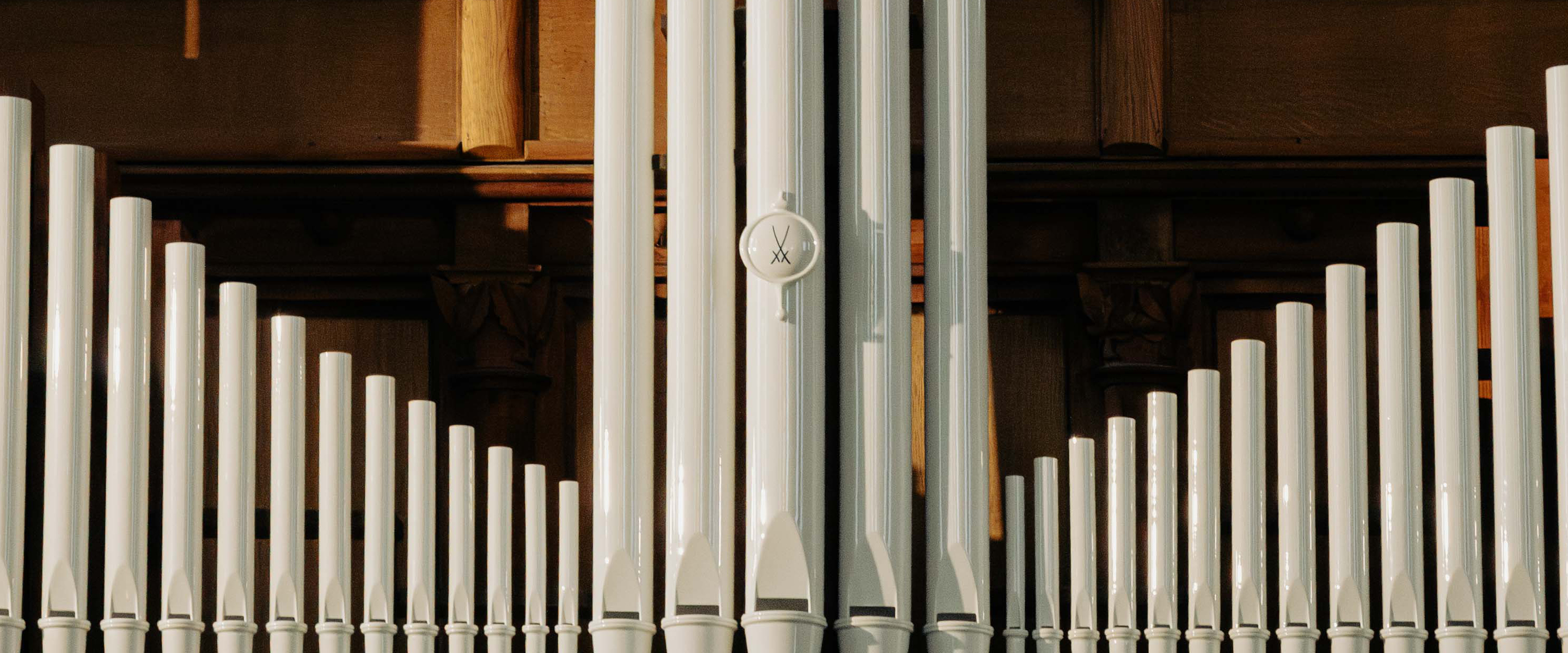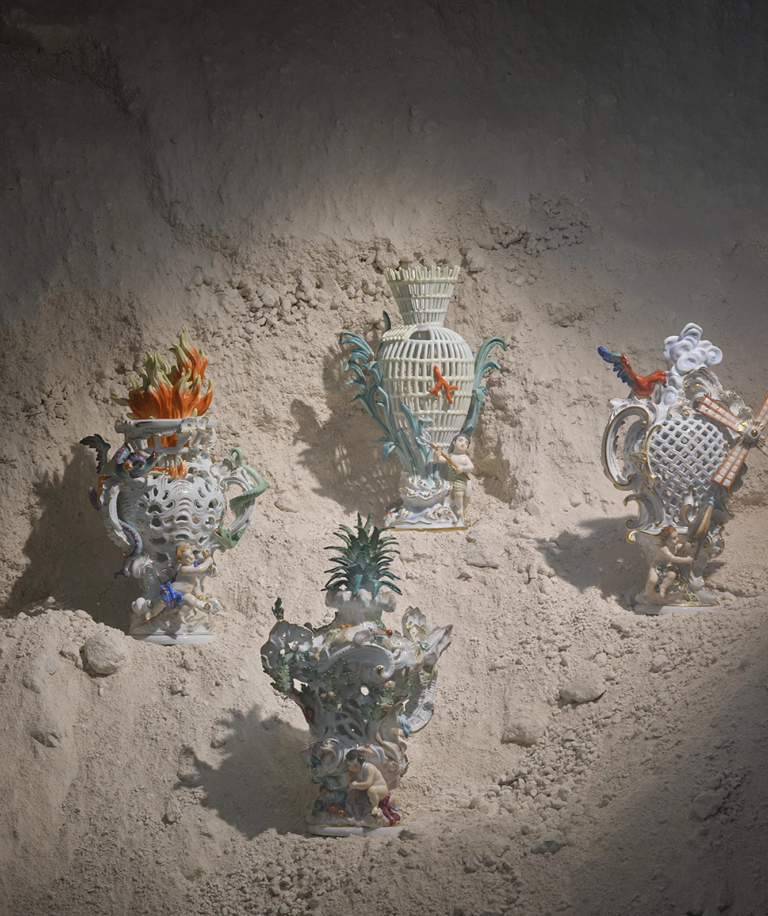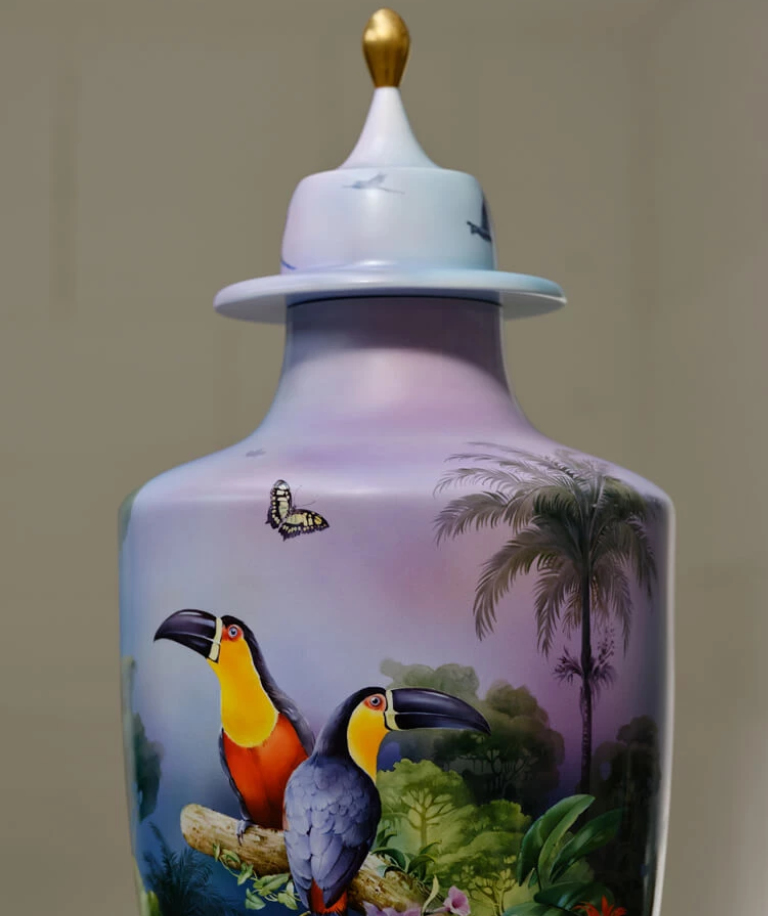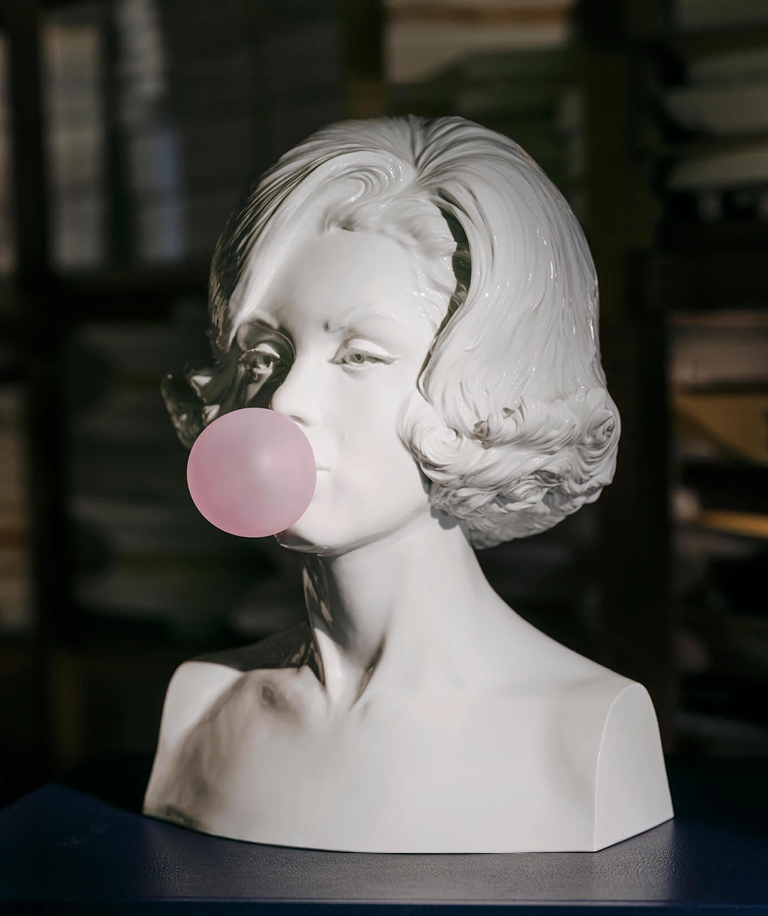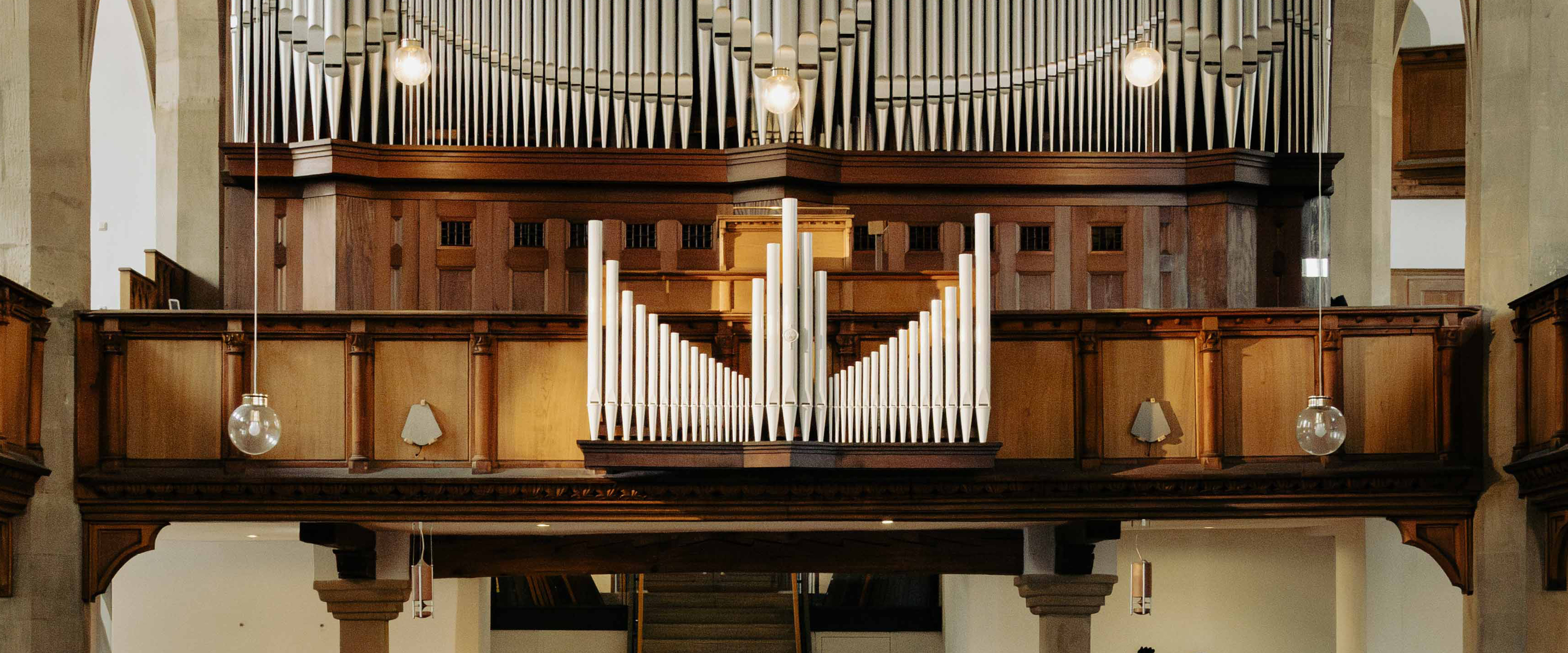
Church organ with
MEISSEN porcelain pipes
-
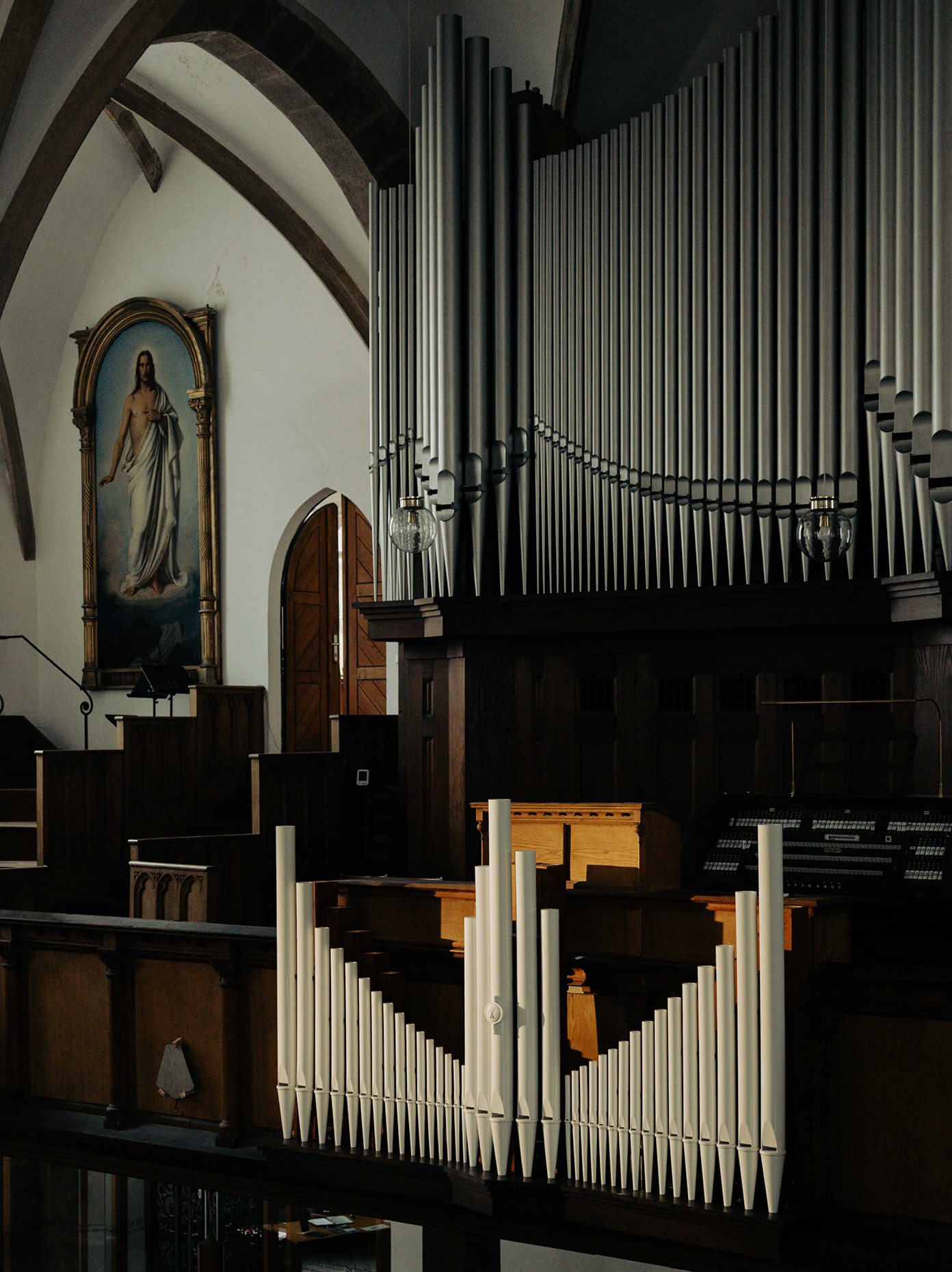 On Pentecost Sunday, June 8, 2025, a significant chapter in the history of music and porcelain was written: The Jehmlich organ in the Frauenkirche in Meissen was ceremoniously inaugurated as the world’s first church organ featuring sounding pipes made of Meissen porcelain. A total of 37 pipes made from the so-called “white gold” were added to the historic instrument – a unique symbiosis of traditional organ building and masterful craftsmanship, unparalleled anywhere in the world.
On Pentecost Sunday, June 8, 2025, a significant chapter in the history of music and porcelain was written: The Jehmlich organ in the Frauenkirche in Meissen was ceremoniously inaugurated as the world’s first church organ featuring sounding pipes made of Meissen porcelain. A total of 37 pipes made from the so-called “white gold” were added to the historic instrument – a unique symbiosis of traditional organ building and masterful craftsmanship, unparalleled anywhere in the world.
An idea with a long history – The vision of creating organ pipes from porcelain dates back to the 18th century. As early as 1732, Johann Joachim Kaendler – one of the most important artists of MEISSEN’s early period – partnered with organ builder Johann Ernst Hähnel to explore this ambitious endeavor. Between 1732 and 1737, they developed the first drafts and prototypes, but the delicate material repeatedly posed insurmountable challenges. The vision of a porcelain organ remained unfulfilled for centuries.
Yet time and again, there were renewed efforts to make porcelain resonate: from the Freyer & Co. ocarina factory in the 19th century, to experimental instruments by Emil Paul Börner in the 1920s, and finally to a remarkable discovery in the 1950s, when MEISSEN designer Ludwig Zepner rediscovered early concepts. In the year 2000, Zepner – together with Jehmlich Orgelbau Dresden – succeeded for the first time in creating sounding organ pipes from Meissen porcelain.
What once seemed a bold dream has now become reality: The Jehmlich organ in the Frauenkirche in Meissen was designed to accommodate porcelain pipes and has now been enhanced with 12 bass and 9 treble pipes, as well as a complete register ranging from c0 to c3 – all crafted from Meissen porcelain. The historic organ, itself a witness to the German organ reform movement and home to the oldest preserved organ pipes in Saxony, has thus been expanded into an acoustic and visual masterpiece.
